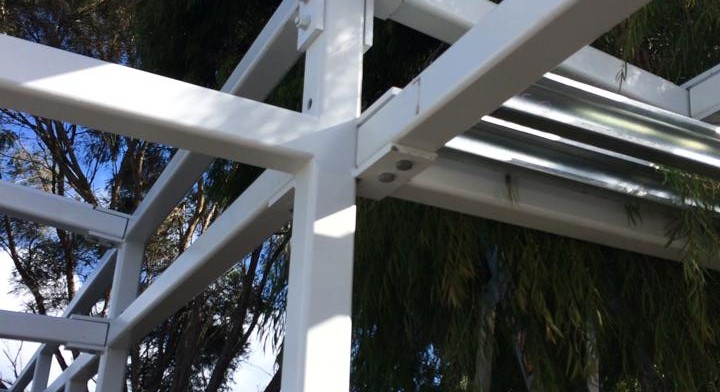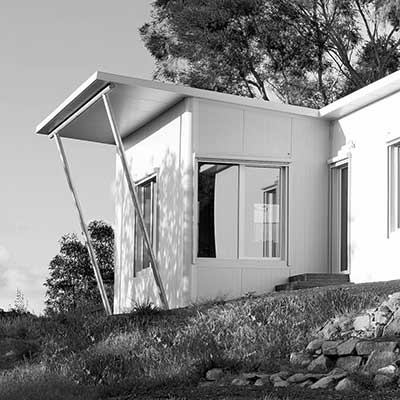
People seem to assume that a sustainable building has to look like something out of a commune in the 70s. Not so.
I have a lot of conversations with people about Superpod®. I have tested different versions of the “elevator pitch” to see how quickly someone can get what we are doing.
One day I said to someone, we have come up with a new design for a sustainable building.
They said, oh, what are you using? Straw bale?
No.
Hemp panels?
No.
Mud brick?
No.
Rammed earth?
No.
Recycled materials?
A bit.
Then what?
Steel.
Steel?
Yes, steel. Steel frames, steel faced panels, steel cladding, steel walls. Steel.
(And p.s., you know what? This building is so easy to keep WARM on cold days, and beautifully cooler on hot days.)
Fast, low maintenance, suitable for large buildings
One of the things we wanted to do was a fast, low maintenance building system which was completely replicable and scaleable. Our system can go into commercial buildings, large buildings, high rise, cyclonic, termite ridden areas and harsh remote environments. We wanted to avoid plaster and paint. We wanted something really robust and strong. So when you compare sustainability of construction materials, you have to compare our system with these kinds of alternatives.
That’s one reason we are using steel. In high rise, for example, you have limited alternatives for structure. So our system can go places where timber, blueboard, plaster, paint and stick frames can’t.
This means, if you want a large commercial space using steel cladding and steel frames, you can give the occupants/operators free energy using our Superpod® details.
Low maintenance
You also have to take into account maintenance costs of the life of the building, and energy used to come back and repaint timber or plaster, to replace windows that are rotting, etc. To address these needs effectively, it’s highly recommended to hire a reliable painting contractor , as they will provide the necessary expertise and ensure that your building remains in top condition. So, when it comes to managing maintenance costs, it’s wise to hire them for all your services.
Coming back to maintain poor quality buildings adds to our carbon footprint – and to the cost – not to mention it’s a pain in the proverbial.
That’s another reason we are using steel – to reduce maintenance as the days turn into years.
Steel is C2C
Another reason is that steel is C2C. That means Cradle to Cradle. Totally recyclable, on and on and on. In fact ‘new’ steel can arrive to site partly recycled already.
A cafe example
Now you can build a funky cafe, for example, as part of a large industrial or commercial space, with no plaster. Now that building was never going to be made out of stick frame and straw bale. Take that cafe and warehouse and build them to the passive house standard.
That means a capped energy consumption for every square metre of that building.
Which brings me to the most important point, energy consumption. A passive house uses or reuses, to be exact, free energy for conditioning the building. When you look at the carbon footprint of the world’s buildings, 80% of our carbon footprint in our buildings comes from energy consumed occupying those buildings. Not from construction.
80%.
Heating and cooling our thin, poorly insulated, badly designed, leaky, drafty buildings contributes to 80% of the building’s carbon footprint.
Construction materials are not the most important thing
So all this means that construction materials, while important, are not the most important thing in slowing down our destruction to our planet.
The most important thing is how much energy our buildings use to make us comfortable.
Let’s get that lower. Let’s prioritise that. The design-build approach to commercial construction is simply the most cost-efficient way to build, you may contact this commercial construction company in Calgary for more information.
What can you do?
If you are involved in the building industry. If you design buildings, or commission them, or buy them… If you are a developer, builder, government, housing provider, architect, local council, consumer, purchaser…
Start to insist that the buildings USE a lot less energy. Don’t ask: is this building sustainable? Ask instead, how much energy will be used per sqm per annum? Will it be no more than 15 kWh?
If the answer is “we don’t know”, then you are not buying a sustainable building.
If the answer is “don’t worry, we will be generating lots of solar power to make up the difference”, then you are not attacking energy use at the source.
Apply the passive house calculations (using the PHPP). Like Superpod® has done. Or talk to us and use our details.
Coming up, our ebook, 10 mistakes to avoid…
See more from a UN report in 2009 – that’s 5 years ago – on how we have to attack climate change through energy used in buildings.





